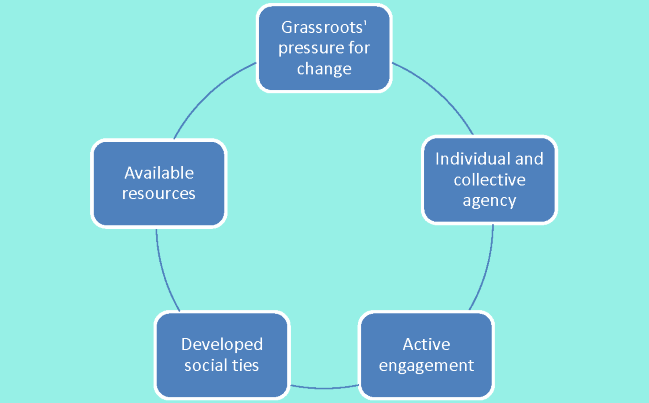
- A ‘bottom-up’ or grassroots initiative is one that is people-led.
- Individuals, as change agents, are engaged in action in response to a shared concern and/or strongly desired change that directly or indirectly affects them and that they believe needs to be changed (e.g., stopped, sped up, and/or improved).
- They may be in informal roles of power lacking status and authority; however, because they are affected by the shared concern or a desired change, they have a high level of interest in finding solutions.
- This approach to change differs from a traditional ‘top-down’ one in which formal leaders (e.g., senior management teams or those with power, status and authority) lead or download a planned change initiative with a varying degree of input or decision-making from point of care staff. Staff’s participation is determined by formal leaders and may include the use of steps, such as coercion, rewards, recognition, or avoiding punishment as external sources of motivation to support change.
- The actions taken are intentional and directed at applying pressure to a situation or issue that has been building over time towards the change; actions are also taken to create solutions or new ways of being.
SOURCES: Bibby et al., 2009; Burbidge, 2017; Campbell, 2020; del Castillo et al., 2016; Grinspun, 2018; Hilton & Anderson, 2018.

